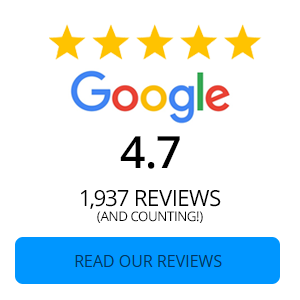Budgeting is truly the key to unlocking financial freedom. It's about having enough income, savings, and investments to live life on your terms, without being tied to a 9-to-5 job. Total financial freedom means you're in control of your money, making choices that support your dreams and goals.
To define financial freedom means your money works for you, not the other way around. It takes planning and smart money habits, but the payoff is worth it: more flexibility, less stress, and the ability to pursue what really matters.
At Coosa Valley Credit Union, we're here to support you every step of the way on your journey to financial freedom. Whether it's setting up a money market savings account, individual retirement accounts, or even special saving accounts, we have options to fit your goals. Give us a call today and let's start taking the steps to financial freedom together!
Find a Budgeting Method That Works For You
Nearly half of Americans say they're living paycheck to paycheck, and about 30% of households spend 90% of their income just covering essential expenses, according to the Bank of America Institute.
A budgeting system is simply a plan for how you'll spend and save your money. There's no one-size-fits-all solution and your habits, lifestyle, and goals will help determine what works best.
Before beginning: Determine your after-tax income
Before you can create a budget to start your journey to financial freedom, you need to know exactly how much money you're working with. This means figuring out your after-tax income, which is also known as your take-home pay.
If you get a regular paycheck, this is the amount you actually receive after taxes are taken out. If money is also deducted for things like a 401(k) or health insurance, be sure to add those amounts back in when planning your budget so you see the full picture.
For other income sources, like freelance work or side gigs, subtract any business expenses or taxes you'll owe. The goal is to get a clear view of your real, spendable income each month.
Try the 50/15/5 Rule: A Simple Way to Manage Your Money
If you're not sure where to begin with budgeting, Fidelity's 50/15/5 rule is a great place to start. It's a straightforward guideline designed to help you balance essential expenses, retirement savings, and emergency funds. This is a flexible guideline that allows you to rebalance your budgeting after you've tested it out. Let's take a closer look at how it works.
Step one: 50% for essentials
Half of your take-home pay should go toward must-have expenses which are considered things you truly need to live and work. This includes:
- Housing - Rent or mortgage, property taxes, utilities, insurance, HOA fees
- Groceries - Basic food items, not dining out or takeout
- Transportation - Car payments, gas, insurance, maintenance, public transit
- Health care - Premiums (if not payroll-deducted), prescriptions, co-pays
- Childcare - Tuition, daycare, or school fees
- Debt payments & obligations - Credit cards, student loans, child support, alimony, life insurance
These are your non-negotiables — but that doesn't mean they're set in stone. Look for ways to reduce costs without sacrificing what matters most. Small changes like using public transit, meal planning, or switching to a more affordable insurance plan, can go a long way.
Step two: 15% for retirement savings
Fidelity recommends saving at least 15% of your pre-tax income for retirement. This includes any employer contributions to your 401(k) or similar plan. If 15% feels like a stretch right now, start with what you can and increase it gradually over time.
Saving for retirement may not seem urgent, but starting early helps your money compound and gives you more flexibility and freedom in the future.
Step three: 5% for emergency savings
Life happens. That's why Fidelity suggests setting aside 5% of your take-home pay for short-term savings or emergencies like car repairs, medical bills, or unexpected job loss.
Build this into a high-yield money market savings account you can access easily. Once you hit a healthy emergency fund (typically 3-6 months' worth of expenses), you can use this category for other short-term goals, like a vacation or home repairs.
Step four: The remaining 30%
Adding all the costs up, we've covered 70% of your income with essentials, retirement savings, and emergency funds (50% + 15% + 5%). The great thing about Fidelity's 50/15/5 rule is the flexibility of the remaining 30% — how you use it is entirely up to you.
Fidelity calls this portion "other wants and goals." It's meant for discretionary spending, things like dining out, hobbies, travel, entertainment, or saving for personal milestones like a wedding, car, or college fund. You can also use part of this 30% to boost your retirement savings, pay down debt faster, or contribute to causes you care about.
Whatever you choose, make a plan for it. Giving this part of your budget structure helps you enjoy your money without overspending or derailing your bigger goals.
Budget Your Way to Financial Freedom with Coosa Valley Credit Union
The good news? You have more control over your financial future than you might think. With a few smart habits and intentional choices, you can take charge of your money and start building the life you want.
At Coosa Valley Credit Union, we're here to support you every step of the way. Whether you're starting a budget, saving for a goal, or looking for the right financial tools, we've got the resources to help you succeed. Give us a call or visit us online to explore your options and start your journey toward financial freedom today!

